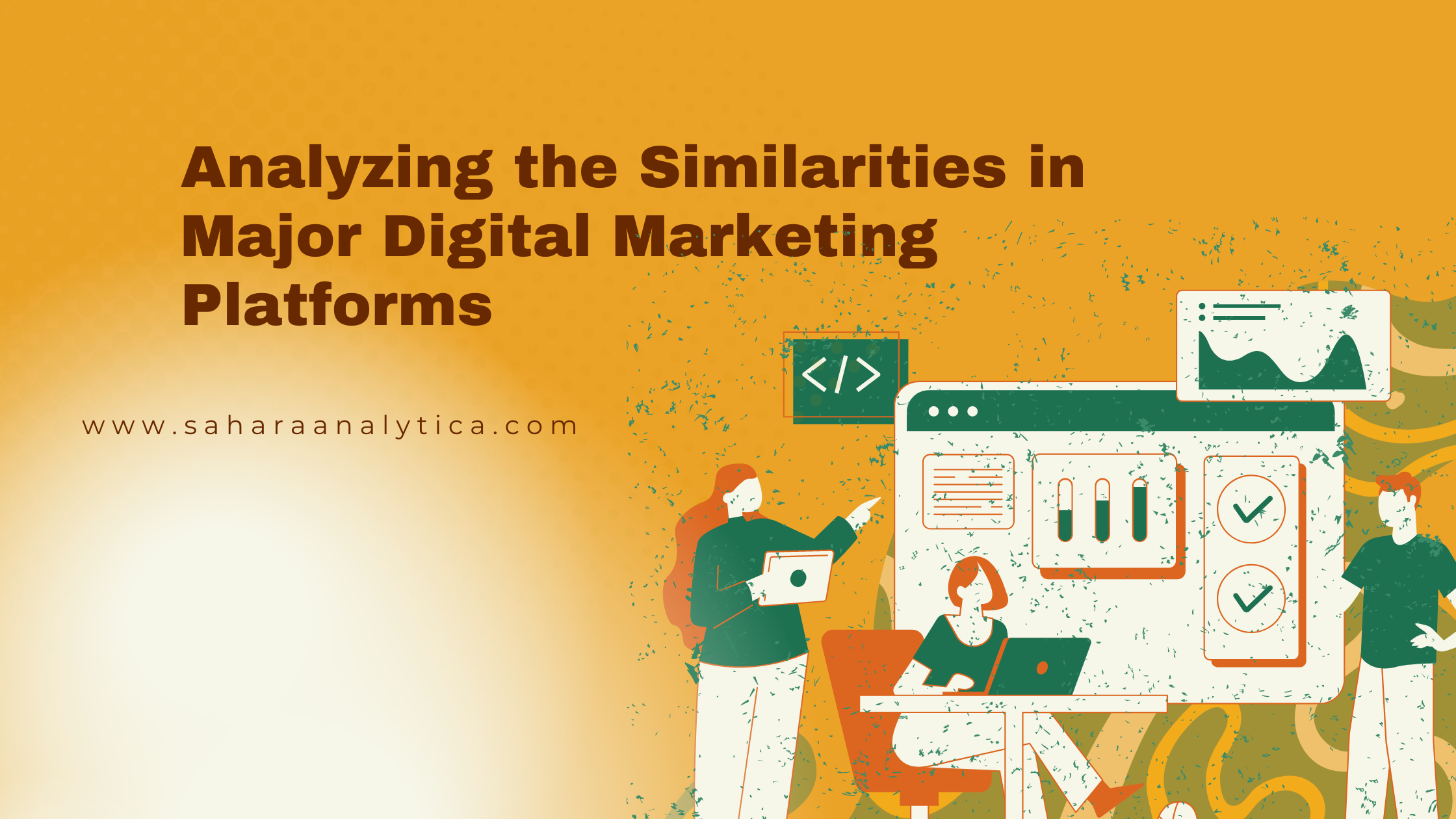In the vast and ever-evolving landscape of digital marketing, a multitude of platforms offer businesses diverse avenues to reach and engage with their target audiences. From social media giants to search engine behemoths, each platform brings its unique set of features and functionalities to the table. However, amidst the diversity, there are striking similarities that underscore the fundamental principles of effective digital marketing. In this blog post, we’ll delve into the common ground shared by major digital marketing platforms, shedding light on the core elements that drive success across the digital marketing spectrum.
1. Targeted Advertising: One of the fundamental pillars of digital marketing is the ability to target specific audiences with precision and relevance. Across major platforms such as Google Ads, Facebook Ads, and LinkedIn Ads, advertisers have access to sophisticated targeting options based on demographics, interests, behaviors, and other criteria. By honing in on the right audience segments, advertisers can maximize the effectiveness of their campaigns and optimize their return on investment (ROI).
2. Performance Tracking and Analytics: Another commonality among major digital marketing platforms is the emphasis on performance tracking and analytics. Whether it’s Google Analytics, Facebook Insights, or LinkedIn Analytics, these platforms provide robust tools for measuring the success of marketing campaigns, tracking key performance indicators (KPIs), and gaining insights into audience engagement and behavior. By leveraging data-driven insights, marketers can refine their strategies, optimize their campaigns, and drive continuous improvement in their digital marketing efforts.
3. Content Marketing and Storytelling: Content lies at the heart of digital marketing, and major platforms offer opportunities for brands to create and share compelling content that resonates with their target audience. Whether it’s blog posts, videos, infographics, or social media posts, content marketing plays a central role in building brand awareness, driving engagement, and fostering relationships with customers. Across platforms like Instagram, YouTube, and Twitter, brands have the opportunity to tell their stories, showcase their products, and connect with audiences in meaningful ways.
4. Social Engagement and Community Building: Social media platforms serve as virtual gathering places where users come together to connect, share, and engage with content. Major platforms like Facebook, Instagram, and Twitter offer brands the opportunity to build communities, foster dialogue, and cultivate relationships with their audience. By actively participating in conversations, responding to comments, and soliciting feedback, brands can humanize their presence and build trust and loyalty among their followers.
5. Mobile Optimization and Accessibility: With the proliferation of mobile devices, optimizing digital marketing campaigns for mobile users has become essential. Major platforms prioritize mobile accessibility and provide tools and features to ensure that campaigns are optimized for mobile devices. Whether it’s responsive website design, mobile-friendly ad formats, or app-based advertising options, catering to the mobile audience is a common focus across digital marketing platforms.
Conclusion: In conclusion, while major digital marketing platforms offer diverse features and functionalities, there are common threads that run through the fabric of effective digital marketing. From targeted advertising and performance tracking to content marketing and social engagement, the core principles of reaching and engaging audiences remain consistent across platforms. By understanding these commonalities and leveraging them strategically, marketers can craft cohesive and effective digital marketing strategies that drive results and deliver value across the digital landscape.
